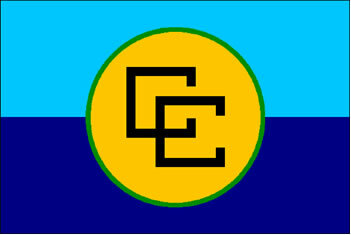One of the most prominent aspects of the globalized world and the current world order is the formation of regional agreements, better known as economic blocks, which, instead of establishing themselves as a counterpoint to the global integration of globalization, acted to intensify it. Nowadays, there are different types of economic blocs that are organized in different denominations and levels of integration among their member countries.
Thus, as there are different goals and different levels of advancement in economic terms among the regional agreements, a classification of economic blocks is adopted in order to better study them. As such, they are placed in a hierarchy that goes from the tariff preference zone to an economic and monetary union. Check out:
Tariff preference zone: it is an initial step of integration between the countries, so that they adopt only a few tariffs preferences involving some products, making them cheaper in relation to countries not participating in the block.
Example: ALADI (Latin American Integration Association).
free trade zone: Consists of the elimination or significant reduction of customs tariffs on products traded between member countries. Like the previous type, this is a purely commercial agreement.
Examples: NAFTA (Free Trade Agreement of the Americas), CAN (Andean Community), between others.
Customs union: this is a free trade zone that has also adopted a Common External Tariff (TEC), which is a tariff aimed at taxing products coming from countries that are not members of the blocs. Thus, in addition to reducing the price of products traded between member countries, the Customs Union also makes products from countries outside the bloc even more expensive.
Do not stop now... There's more after the advertising ;)
Example: Mercosur (Southern Common Market). The TEC, in this case, is adopted only among its effective members (Brazil, Argentina, Paraguay, Uruguay*).
common market: it is an economic bloc that has an advanced level of economic integration, going far beyond a trade agreement, as it involves the free circulation of products, people, goods, capital and labor, making the borders between its members almost non-existent in terms of trade and mobility populational.
Political and Monetary Union: it consists of a common market that has further expanded its level of integration, which now also extends to the monetary field. A common currency is then adopted, which replaces local currencies or becomes commercially valid in all member countries. A Central Bank of the bloc is also created, which starts to adopt a common economic policy for all members.
The only example of a common market and, at the same time, political and monetary union is the European Union, which is today considered the most important economic bloc today due to its advanced level of integration. In many cases, this integration even reaches the political decisions that are eventually taken together by the member countries.
* Venezuela was suspended from Mercosur for an indefinite period in December 2016.
By Me. Rodolfo Alves Pena
Would you like to reference this text in a school or academic work? Look:
PENA, Rodolfo F. Alves. "Classification of economic blocks"; Brazil School. Available in: https://brasilescola.uol.com.br/geografia/classificacao-dos-blocos-economicos.htm. Accessed on June 27, 2021.
Embraer called the Itamaraty in order not to lose space in Kazakhstan, one of its main Asian clients. The fear is with the imminent entry into force of surcharges for planes outside the Customs Union, a bloc led by Russia that also includes Belarus.
Starting in July of next year, foreign aircraft and aeronautical components will start paying import surcharges as one of the stages of the customs agreement, in force since 2010. [...]
Embraer's main concern is motivated by the fact that a Customs Union is characterized by:
a) for not negotiating with countries that are not part of the agreement.
b) for establishing high customs tariffs for any imported product.
c) by the agreement among the member countries to only negotiate with countries that have good economic relations with all that make up the union.
Mark the type of agreement that presents, at the same time, the elimination of customs duties, the regulation for imports, permission for the free circulation of goods, merchandise and people, in addition to the adoption of currency only.
a) Free Trade Area.
d) Economic and Monetary Union.


